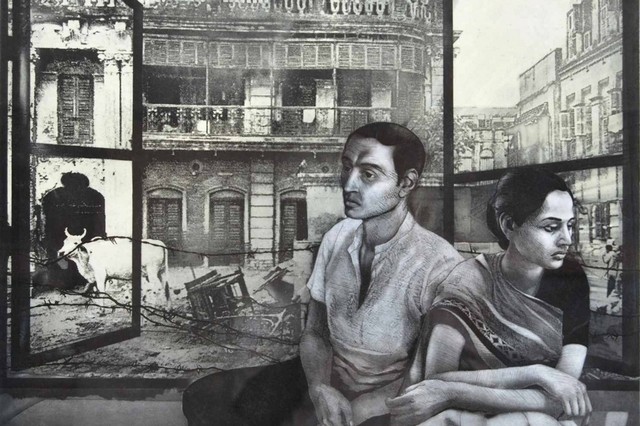 Works of art can capture the essence of a nation like no words can. One such is Wounds by Somnath Hore, who is regarded as the doyen of Indian printmaking.
Works of art can capture the essence of a nation like no words can. One such is Wounds by Somnath Hore, who is regarded as the doyen of Indian printmaking.
Hore used a burin – a steel engraving tool – and acid to represent the destruction and devastation that brought injustice and untold suffering on the poor over the course of the 20th century.
Wounds is part of a paper pulp print series created in the 1970s by Hore that explores human suffering through disfigurations on paper, creating wound-like gashes, sometimes stained with red bloodlike pigment.
This is just one of the 157 works from more than 20 Pakistani and Indian artists being showcased in Trajectories: 19th-21st Century Printmaking in India & Pakistan, a groundbreaking exhibition at Sharjah Art Museum.
The works take the visitor on a journey across decades, beginning in the 19th century and noting the early influence of British colonialism on printmaking styles, to the era of independence and, finally, into the present day.
“The intention is to highlight the two countries’ rich shared art traditions and engender an inspiring artistic dialogue that transcends borders and political realities,” says Manal Ataya, the director general of Sharjah Museums Department. “The exhibition intends to consolidate the close and multifaceted, cultural and artistic links that the UAE has always maintained with the South Asian subcontinent.”
Continue reading at The National:
Sharjah’s exhibition of South Asian prints reveals the birth of an art



















Comments